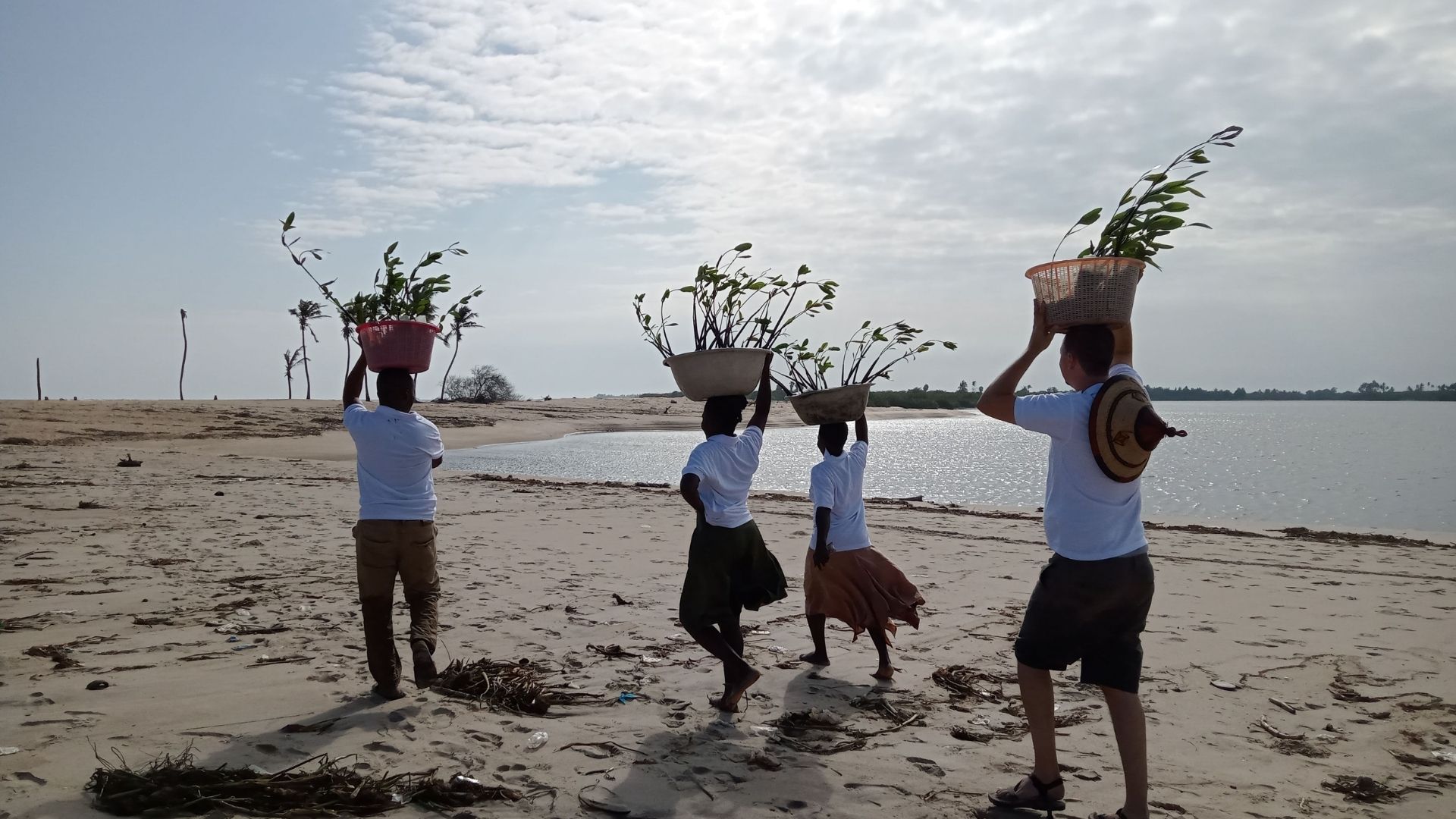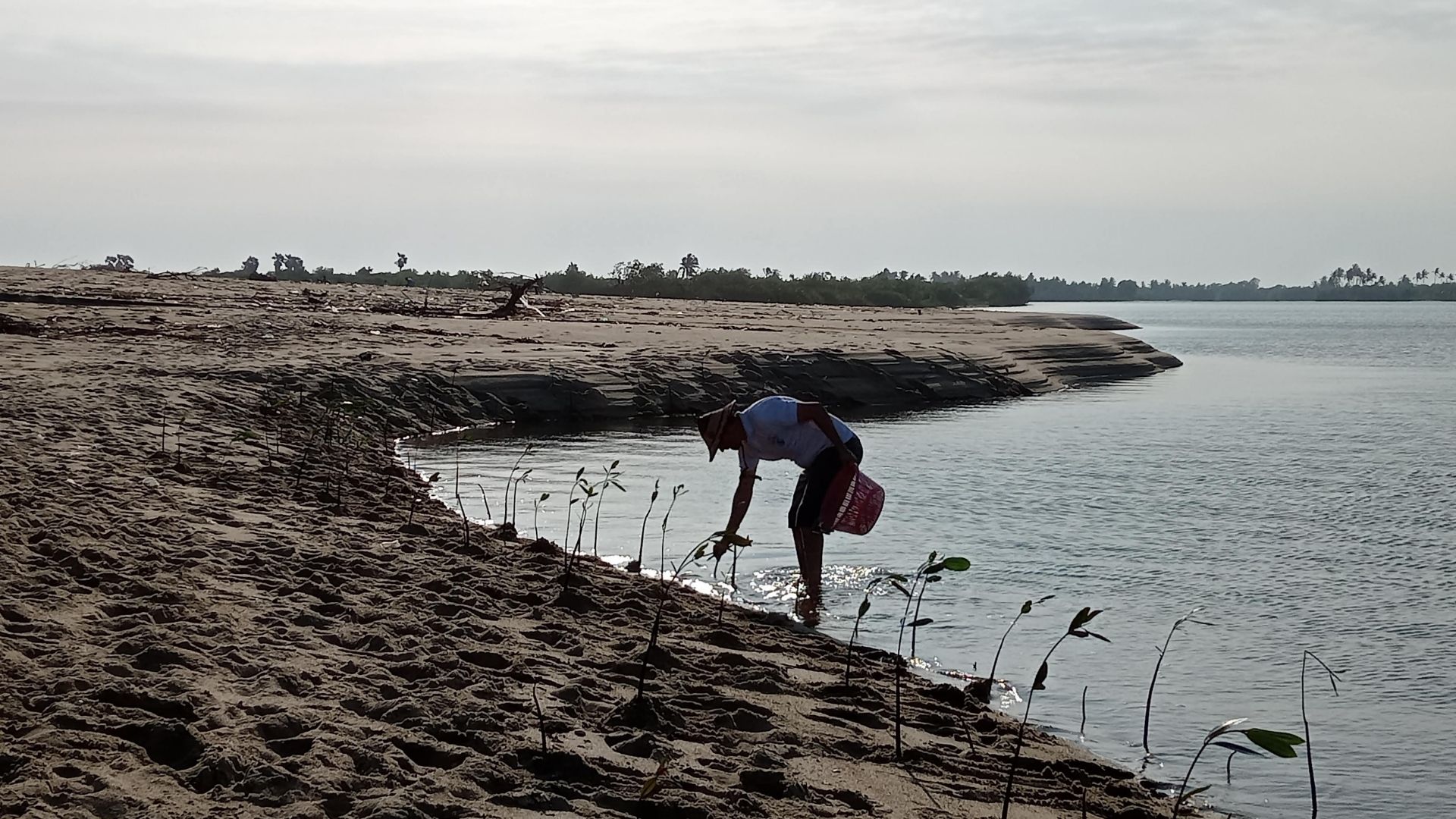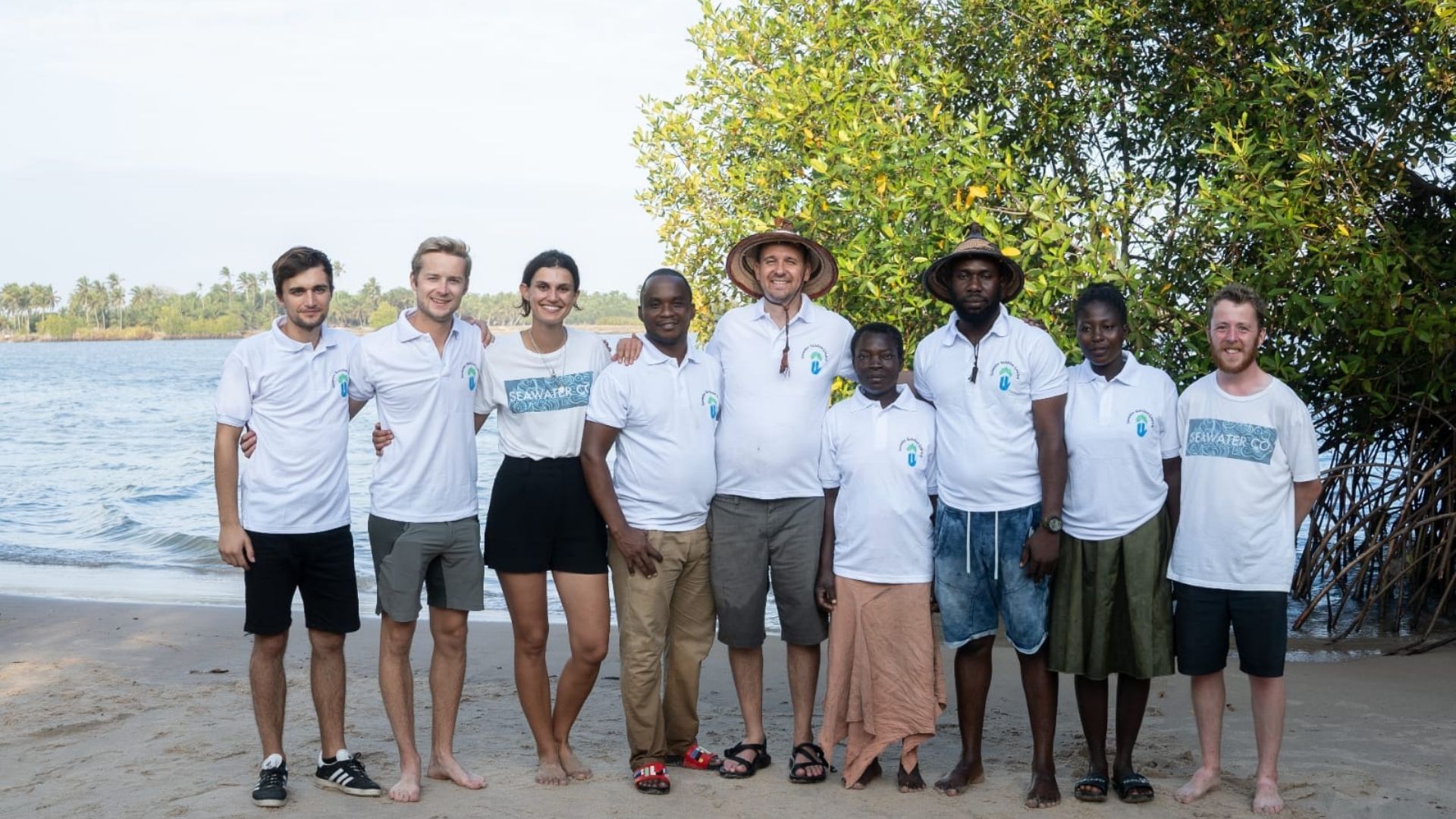By Chris Eccles, Seawater Solutions Project Coordinator (Africa)

In Ghana we have some pretty ambitious plans to plant millions of mangroves across coastlines in the coastal regions over the next few years and it all starts with a few seeds.
When it comes to environmental degradation, there is a significant negative-feedback loop which must be considered when approaching restoration activities; it is not just the initial infrastructure which is destroyed (such as trees and river banks), but often the capacity for a system to self-restore and recover. In the case of the mangrove forests of coastal Ghana, the cutting of trees and ensuing coastal erosion has made it difficult for mangrove seeds to germinate in the natural system, as they are often washed away or damaged before they have the time to germinate. Because of this, often natural regeneration requires a helping hand in the initial stages, this is why we are working with local communities and partners such as the Forestry Commision to establish nurseries for mangrove seedlings and other crops to develop.

We grow all the seeds in the nurseries for the first few months where we can give them a steady supply of water, a little shade, and monitor them until they are developed enough to be planted in the field and stand up to the sometimes fierce currents and waves of the increasing degrading Ghana coastline.
This process requires a lot of patience and hard work and we’re lucky to work with some amazingly dedicated people from the local communities who are just as committed as we are to ecological restoration.

Recently we have been taking some of the more mature seedlings out to the field to be planted in an area so affected by erosion that entire beaches have disappeared in just a few months. It is our aim that by establishing a strong barrier of mangrove woodland here that we can prevent further loss of Ghana’s coastline and even reverse some of the damage, all while providing livelihoods to the affected communities with seed collection, nurseries, and planters.
Plant the seed, save the soil!